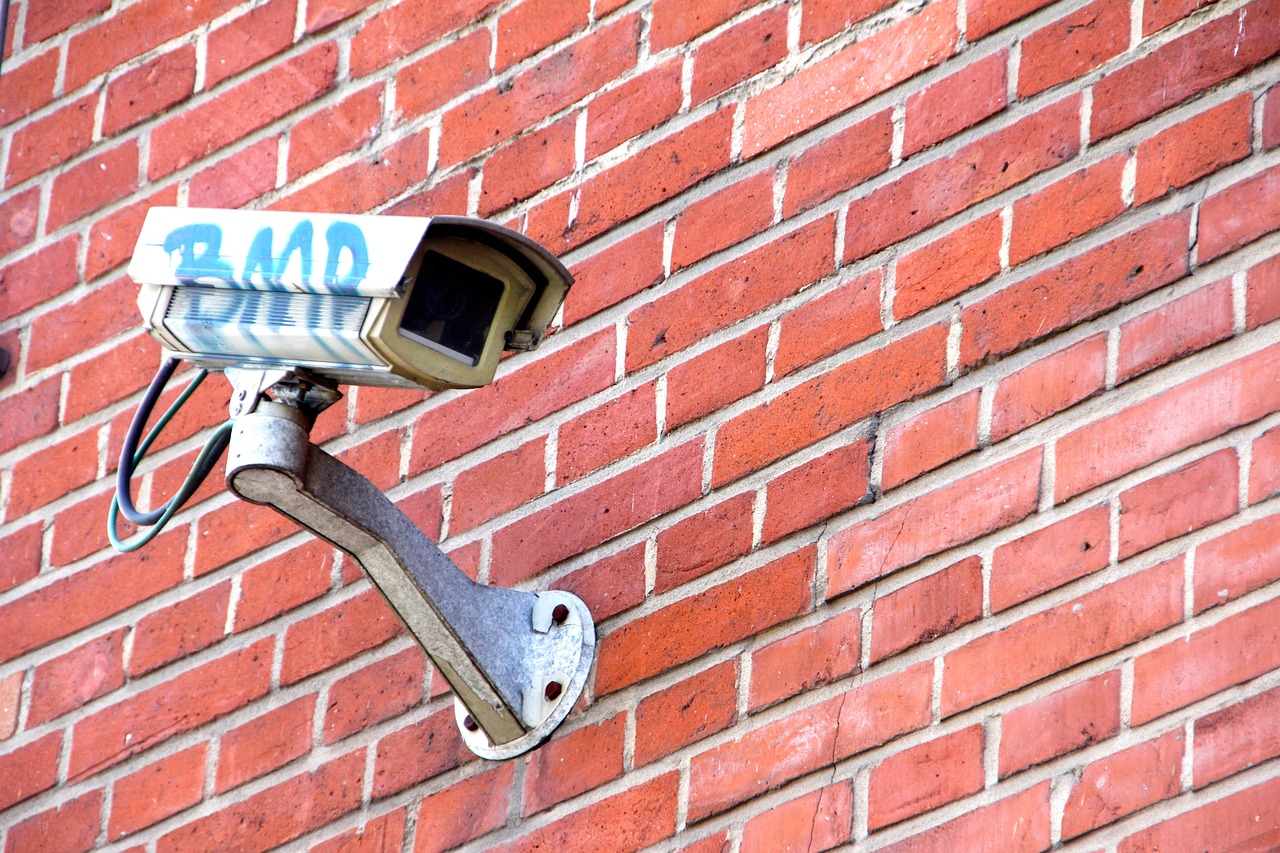Understanding Wallet Lifecycle Management
In today's digital age, the concept of wallet lifecycle management has emerged as a critical aspect of financial technology. As more users turn to digital wallets for their transactions, understanding how to effectively manage these wallets throughout their lifecycle becomes increasingly important. But what exactly does this entail? It involves not only the creation and maintenance of wallets but also the security measures and eventual retirement of these digital tools. Just like a car requires regular maintenance to run smoothly, digital wallets demand ongoing attention to ensure they provide a seamless user experience.
Imagine your digital wallet as a living organism that goes through various stages of life. From birth (creation) to maturity (maintenance) and finally to retirement, each phase requires specific actions to keep it healthy and functional. Organizations that prioritize wallet lifecycle management can enhance user experience, reduce risks, and ultimately drive customer satisfaction. This article will delve into the essential aspects of wallet lifecycle management, exploring its importance, the various stages involved, and the best practices for ensuring effective management.
Effective management strategies not only enhance usability but also bolster security. After all, no one wants to deal with the headache of a compromised wallet or a frustrating user experience. By understanding the wallet lifecycle, businesses can implement measures that not only attract users but also retain them. In the following sections, we will explore the importance of wallet lifecycle management, the stages involved, and the security measures that must be in place to protect both the organization and its users.
As we navigate through this topic, keep in mind that the digital landscape is constantly evolving. Therefore, staying informed about the latest trends and best practices in wallet lifecycle management is essential for any organization looking to thrive in the competitive fintech space. So, buckle up as we dive deeper into the world of digital wallets and discover what it takes to manage them effectively!

The Importance of Wallet Lifecycle Management
Effective wallet lifecycle management is crucial for ensuring security, usability, and customer satisfaction in today’s digital landscape. As more consumers turn to digital wallets for their transactions, organizations must prioritize management strategies that enhance the user experience while minimizing risks. Imagine a world where your money is just a click away, but without the right management, that convenience could turn into a nightmare. This is where the significance of wallet lifecycle management comes into play.
First and foremost, by implementing a robust wallet lifecycle management strategy, organizations can significantly reduce the risk of fraud. With the increasing sophistication of cyber threats, it’s essential to have systems in place that not only protect user data but also maintain trust. When users feel secure, they are more likely to engage with the wallet services, leading to increased adoption rates. In fact, a study by XYZ Research found that companies with effective wallet management strategies saw a 30% increase in user retention compared to those that did not prioritize this aspect.
Moreover, effective wallet lifecycle management enhances usability. When wallets are well-managed, users enjoy a seamless experience, from creation to retirement. This includes everything from easy onboarding processes to responsive customer support. A user-friendly interface can make all the difference in how customers perceive and interact with digital wallets. Think about it: if you had to struggle with a complicated setup process or encounter constant issues, would you continue using that wallet? Probably not!
Additionally, organizations that focus on wallet lifecycle management can optimize their services based on user feedback and analytics. By continuously monitoring how users interact with their wallets, companies can identify pain points and areas for improvement. For example, if data shows that users frequently abandon the wallet during the onboarding process, organizations can refine their approach to make it more intuitive. This not only enhances user satisfaction but also fosters loyalty.
In conclusion, the importance of wallet lifecycle management cannot be overstated. It is about creating a secure, user-friendly environment that fosters trust and satisfaction. As digital wallets become an integral part of our financial lives, organizations must recognize the value of effective management strategies. By prioritizing wallet lifecycle management, companies can not only protect their users but also position themselves as leaders in the digital payment space.
- What is wallet lifecycle management? - Wallet lifecycle management refers to the process of overseeing and optimizing the various stages of a digital wallet's existence, from creation and maintenance to retirement.
- Why is security important in wallet management? - Security is vital to protect user data and prevent fraud, ensuring users feel safe when using digital wallets.
- How can user feedback improve wallet management? - Analyzing user feedback helps organizations identify issues and enhance the user experience, leading to higher satisfaction and retention rates.

Stages of Wallet Lifecycle
The wallet lifecycle is a dynamic journey that every digital wallet undergoes, from its inception to its eventual retirement. Understanding these stages is crucial for organizations aiming to optimize wallet performance and enhance user satisfaction. Each stage plays a critical role in ensuring that the wallet not only meets user needs but also adheres to security standards and operational efficiency. So, let’s dive into the key stages of the wallet lifecycle, which include creation, maintenance, and retirement.
The first stage, creation and onboarding, is where it all begins. This is the phase where users register and set up their wallets. The goal here is to create a seamless onboarding experience that encourages user adoption. Imagine walking into a store where everything is laid out perfectly for you; that’s the kind of experience users should have when they create their wallets. Organizations should focus on simplifying the registration process, minimizing the number of steps required, and offering clear instructions. A well-designed onboarding process can significantly reduce drop-off rates and lead to higher user engagement.
To ensure a secure environment, implementing robust user verification processes is essential. This involves verifying user identities during wallet creation to prevent fraud and unauthorized access. Organizations can utilize various methods such as:
- Email verification: Sending a confirmation link to the user's email address.
- Phone verification: Using SMS codes to validate the user's phone number.
- Document verification: Requesting government-issued ID to confirm the user's identity.
By establishing these verification methods, organizations can significantly enhance the security of the wallet creation process, ensuring that only legitimate users gain access.
Once the user is verified, the next step is wallet configuration. This stage is all about customizing the wallet to meet user preferences. Think of it like customizing your phone settings; users want their wallets to reflect their individual needs and preferences. Organizations should offer options for:
- Setting transaction limits
- Choosing preferred currencies
- Configuring notification settings
By allowing users to tailor their wallets, organizations can enhance user satisfaction and create a more engaging experience. A well-configured wallet not only makes transactions easier but also fosters a sense of ownership among users.
The second stage, maintenance and support, is vital for ensuring that the wallet remains functional and user-friendly. Regular maintenance involves updating software, fixing bugs, and ensuring that the wallet is compatible with the latest security protocols. Just like a car needs regular servicing to run smoothly, digital wallets require ongoing attention to function effectively.
In addition to maintenance, providing ongoing user support is crucial. Users should have access to FAQs, live chat, or customer support to address any issues they encounter. This proactive approach not only resolves problems but also builds trust between the organization and its users, ultimately leading to higher retention rates.
Finally, we arrive at the retirement and decommissioning stage. This is where wallets that are no longer in use are safely decommissioned. It’s essential to handle this stage with care to ensure that user data is protected and privacy regulations are adhered to. Organizations should establish clear data deletion protocols and communicate transparently with users about the retirement process.
By understanding and effectively managing these stages of the wallet lifecycle, organizations can create a seamless experience for users, enhance security, and ultimately drive user engagement and satisfaction.
Q1: What is wallet lifecycle management?
A1: Wallet lifecycle management refers to the processes and strategies involved in managing a digital wallet from its creation to retirement, ensuring security, usability, and user satisfaction throughout its lifecycle.
Q2: Why is user verification important?
A2: User verification is crucial for preventing fraud and ensuring that only legitimate users can access the wallet. It helps protect sensitive information and maintains the integrity of the wallet system.
Q3: How can organizations enhance user onboarding?
A3: Organizations can enhance user onboarding by simplifying the registration process, providing clear instructions, and offering customization options that cater to user preferences.
Q4: What should be done with user data during wallet retirement?
A4: Organizations must establish clear data deletion protocols to securely delete user data during wallet retirement, ensuring compliance with privacy regulations and protecting user information.

Creation and Onboarding
When it comes to the of digital wallets, the experience can make or break user adoption. Think about it: the first impression is everything! If users encounter a complicated setup process, they might just abandon the wallet altogether. Therefore, organizations must prioritize a seamless onboarding experience that not only simplifies registration but also educates users about the wallet's features and benefits.
To kick things off, a well-designed user interface is crucial. It should guide users through the registration process with intuitive prompts and minimal friction. For instance, using progress indicators can help users understand how far along they are in the setup process, reducing anxiety and uncertainty. Additionally, offering options for social media login can streamline the process, allowing users to bypass lengthy forms and jump right into using their wallets.
Another key aspect of onboarding is providing clear instructions and support. This can be achieved through various channels, such as:
- Interactive tutorials that walk users through wallet functionalities.
- Video guides that visually demonstrate setup steps.
- Accessible FAQs or help centers that address common concerns.
But let's not forget about the importance of user verification processes. This stage is vital for ensuring security and trust. Organizations should implement robust verification methods that can include:
- Email verification to confirm user identity.
- Two-factor authentication (2FA) for added security.
- Biometric verification, such as fingerprint or facial recognition, to enhance protection.
Once users are verified, the next step is wallet configuration. Customization is key here! By allowing users to tailor their wallets to their preferences, organizations can significantly enhance user satisfaction. This can include options like:
- Choosing between different themes or layouts.
- Setting up notification preferences for transactions.
- Linking multiple payment methods for convenience.
Ultimately, a successful creation and onboarding process is about creating a welcoming environment that empowers users. By focusing on simplicity, support, and customization, organizations can foster a sense of ownership and loyalty among users, making them more likely to engage with their digital wallets in the long run.

User Verification Processes
When it comes to digital wallets, are the backbone of security. Imagine you’re locking up your most valuable possessions in a safe; you wouldn’t just use any key, right? Similarly, organizations must implement robust verification methods to ensure that only legitimate users gain access to their wallets. The verification process typically starts at the moment a user registers for a wallet. This is where the magic begins, and it’s crucial to get it right.
One popular method for user verification is through multi-factor authentication (MFA). This approach requires users to provide two or more verification factors to gain access to their accounts. For instance, after entering a password, users might need to confirm their identity via a text message code or a biometric scan, such as a fingerprint. This layered security approach significantly reduces the risk of unauthorized access.
Another effective strategy is to utilize identity verification services. These services can cross-reference user information against national databases or third-party verification tools to ensure that the person registering is indeed who they claim to be. For example, when a user submits their ID during registration, the system can quickly validate that ID against official records. This not only enhances security but also builds trust among users who want to feel safe while using their digital wallets.
Additionally, organizations can employ behavioral biometrics as an innovative verification method. This involves analyzing user behavior patterns, such as typing speed, mouse movements, and even how they hold their devices. If a user suddenly exhibits a different pattern—like typing much faster than usual—it could trigger a security alert, prompting the system to require further verification. It’s like having a personal bodyguard that knows your every move!
In conclusion, implementing effective user verification processes is not just a matter of compliance; it’s about creating a secure environment for users to manage their digital assets confidently. By combining various verification techniques, organizations can significantly reduce fraud risks while providing a seamless user experience. Remember, in the world of digital wallets, security and usability go hand in hand.

Wallet Configuration
When it comes to , it’s all about tailoring the digital wallet experience to meet the unique preferences of each user. Imagine walking into a store where everything is customized just for you—how much more enjoyable would shopping be? In the same way, configuring a digital wallet can significantly enhance user satisfaction and engagement. Users should feel that their wallets are not just tools, but extensions of their personal preferences and lifestyles.
To achieve this, organizations must consider several key factors during the configuration process. Firstly, offering customizable settings allows users to adjust features such as notification preferences, transaction limits, and display options. For example, some users may prefer to receive instant notifications for every transaction, while others might want a daily summary instead. By providing these options, organizations can cater to a diverse range of user preferences.
Another important aspect of wallet configuration is the integration of various payment methods. Users should be able to add multiple payment options, such as credit cards, debit cards, and even cryptocurrencies. This flexibility not only enhances usability but also encourages users to adopt the wallet as their primary payment solution. Here’s a simple table to illustrate some of the payment methods that can be integrated:
| Payment Method | Description |
|---|---|
| Credit Cards | Traditional payment method widely accepted across platforms. |
| Debit Cards | Directly linked to a bank account, allowing instant payments. |
| Cryptocurrencies | Digital currencies that offer decentralized payment options. |
| Mobile Payments | Payments made through mobile devices, enhancing convenience. |
Moreover, user interface (UI) design plays a crucial role in wallet configuration. A clean, intuitive interface ensures that users can navigate their wallets with ease. Think of it this way: if a wallet is cluttered and confusing, users are likely to abandon it for a more user-friendly option. Therefore, organizations should prioritize a seamless UI that allows users to manage their wallets effortlessly.
Lastly, organizations should consider implementing user feedback mechanisms during the configuration phase. Allowing users to provide input on their wallet experience can lead to valuable insights that drive further improvements. Whether through surveys, feedback forms, or direct communication, engaging with users helps create a wallet that truly meets their needs.
In conclusion, effective wallet configuration is about more than just functionality; it’s about creating a personalized experience that resonates with users. By focusing on customization, payment integration, user-friendly design, and feedback, organizations can ensure that their digital wallets are not only effective but also enjoyable to use. After all, a wallet that feels personal is one that users will trust and rely on for their financial transactions.
- What is wallet configuration? Wallet configuration refers to the process of customizing a digital wallet to meet the preferences and needs of users.
- Why is user feedback important in wallet configuration? User feedback provides insights that help organizations improve the wallet experience, ensuring it meets user expectations.
- How can I customize my digital wallet? Users can customize their digital wallets by adjusting settings, adding payment methods, and selecting notification preferences.

Maintenance and Support
When it comes to managing digital wallets, are not just optional add-ons; they are essential components that ensure a seamless user experience. Think of it like owning a car: regular maintenance keeps it running smoothly, while support services help you navigate any bumps along the road. In the world of digital wallets, this means providing users with timely updates, addressing their concerns, and ensuring that the wallet functions as intended. By prioritizing these aspects, organizations can significantly enhance user satisfaction and loyalty.
One of the key strategies for effective maintenance is implementing a regular update schedule. Just like software updates on your phone, wallet applications need frequent enhancements to improve functionality, security, and user experience. These updates can include everything from bug fixes to the introduction of new features that cater to evolving user needs. Keeping users informed about these updates is crucial; after all, who doesn't appreciate a heads-up when something new and exciting is about to drop?
In addition to updates, providing robust customer support is paramount. Users should have multiple channels to reach out for assistance, whether it’s through live chat, email, or a dedicated support hotline. Imagine trying to resolve an issue with your wallet, only to find that the support options are limited or unhelpful. This can lead to frustration and, ultimately, a loss of trust in the service. Therefore, organizations should ensure that their support teams are well-trained and equipped to handle a variety of inquiries, from basic troubleshooting to more complex issues.
Moreover, organizations can enhance their maintenance and support strategies by utilizing user feedback. Regularly soliciting input from users can provide invaluable insights into their experiences and expectations. This feedback loop allows organizations to make informed decisions about what features to improve or add. For instance, if multiple users express a desire for a specific functionality, it’s a clear signal that attention is needed. By actively engaging with users, organizations can foster a sense of community and loyalty, making users feel valued and heard.
Another important aspect of maintenance is monitoring the wallet's performance. This involves tracking key metrics such as transaction times, user engagement, and error rates. By analyzing this data, organizations can identify potential issues before they escalate, much like a mechanic who spots a minor issue before it turns into a major repair. Regular performance reviews not only help in maintaining the wallet's functionality but also in ensuring that it meets user expectations consistently.
To summarize, effective maintenance and support for digital wallets are akin to keeping a well-oiled machine running smoothly. By implementing regular updates, offering robust customer support, engaging with user feedback, and monitoring performance, organizations can create a positive user experience that not only retains existing users but also attracts new ones. After all, in the competitive landscape of digital wallets, user satisfaction is the ultimate currency.
- What is wallet lifecycle management? Wallet lifecycle management refers to the processes and practices involved in managing digital wallets from creation to retirement, ensuring security, usability, and customer satisfaction.
- Why is maintenance important for digital wallets? Maintenance ensures that wallets function correctly, are secure, and meet user needs, ultimately enhancing user satisfaction and trust.
- How can organizations improve user support? Organizations can improve user support by providing multiple contact channels, training support staff, and actively soliciting user feedback.

Security Measures in Wallet Management
In today's digital landscape, where transactions occur at lightning speed, security has become the cornerstone of wallet lifecycle management. The importance of safeguarding user data cannot be overstated, especially when it comes to digital wallets that hold sensitive information. Organizations must prioritize implementing robust security measures to protect their users and maintain trust. But what exactly are these measures, and how can they be effectively integrated into wallet management?
One of the first lines of defense in wallet security is data encryption. This technique transforms sensitive information into a coded format that can only be read by those who possess the correct decryption key. By employing strong encryption algorithms, organizations can ensure that even if data is intercepted, it remains unreadable and secure. For instance, the use of Advanced Encryption Standard (AES) is widely recommended due to its strength and reliability. Here's a quick comparison of some popular encryption techniques:
| Encryption Technique | Key Length | Usage |
|---|---|---|
| AES | 128, 192, 256 bits | General purpose encryption |
| RSA | 2048 bits and above | Secure data transmission |
| 3DES | 112 or 168 bits | Legacy systems |
Another critical aspect of wallet security is the implementation of fraud detection systems. These systems are designed to monitor transactions in real-time, identifying any suspicious activities that could indicate fraud. Utilizing advanced analytics and machine learning algorithms, organizations can analyze transaction patterns and flag anomalies for further investigation. Imagine having a security guard who not only watches over your wallet but also learns to recognize your spending habits, alerting you to any unusual activity. This proactive approach can significantly reduce the risk of fraudulent transactions.
Furthermore, organizations should consider incorporating multi-factor authentication (MFA) as an essential security measure. MFA requires users to verify their identity through multiple methods before accessing their wallets. This could include a combination of something they know (like a password), something they have (like a smartphone), or something they are (like a fingerprint). By adding these layers of security, the chances of unauthorized access are dramatically reduced.
In addition to these technical measures, fostering a culture of security awareness among users is equally important. Educating users about potential threats and safe practices can empower them to take charge of their own security. For example, organizations can provide tips on recognizing phishing attempts or the importance of regularly updating passwords. This partnership between organizations and users creates a more secure environment for everyone involved.
Ultimately, the landscape of digital wallets is ever-evolving, and organizations must stay ahead of the curve by continuously reassessing and updating their security measures. By investing in strong encryption techniques, implementing effective fraud detection systems, utilizing multi-factor authentication, and promoting security awareness, organizations can create a robust framework that not only protects user data but also enhances overall trust and satisfaction.
- What is wallet lifecycle management? Wallet lifecycle management refers to the processes and practices involved in creating, maintaining, and retiring digital wallets to ensure security and usability.
- Why is security important in wallet management? Security is crucial to protect sensitive user data and prevent fraud, thereby maintaining user trust and satisfaction.
- What are some common security measures? Common measures include data encryption, fraud detection systems, multi-factor authentication, and user education.
- How can users protect their wallets? Users can enhance their wallet security by using strong, unique passwords, enabling multi-factor authentication, and being vigilant against phishing attempts.

Data Encryption Techniques
In today's digital landscape, where data breaches and cyber threats lurk around every corner, data encryption has emerged as a vital shield protecting sensitive information within digital wallets. Encryption transforms readable data into an unreadable format, ensuring that only authorized users can access the original content. Imagine sending a secret message to a friend, where only you and your friend have the special key to decode it. This is the essence of encryption, and it plays a crucial role in safeguarding user data.
There are several encryption techniques that organizations can implement to enhance the security of digital wallets. Among the most prevalent methods are:
- Symmetric Encryption: This technique uses a single key for both encryption and decryption. It’s fast and efficient but requires secure key management to prevent unauthorized access. Think of it as having a single key to your house; if someone else gets that key, they can enter without any barriers.
- Asymmetric Encryption: Also known as public-key cryptography, this method uses a pair of keys—one public and one private. The public key encrypts the data, while the private key decrypts it. This system is like having a mailbox where anyone can drop in letters (using the public key), but only you can read them (using your private key).
- Hashing: While not a traditional encryption method, hashing transforms data into a fixed-size string of characters, which is nearly impossible to reverse. It’s primarily used for storing passwords securely. Imagine it as turning a delicious cake into crumbs; you can’t reconstruct the original cake from the crumbs.
Implementing these encryption techniques can significantly bolster the security of digital wallets. However, it’s not just about choosing a method; organizations must also consider the encryption standards they adopt. For instance, the Advanced Encryption Standard (AES) is widely regarded as one of the most secure encryption methods available today. It's like choosing the best lock for your door; the stronger the lock, the better protected your valuables are.
Moreover, organizations should regularly update their encryption protocols to keep pace with evolving threats. Just as you wouldn't use the same password for years, relying on outdated encryption can leave your wallet vulnerable to attacks. It’s crucial to stay informed about the latest developments in encryption technology and adapt accordingly.
In conclusion, data encryption techniques are fundamental in ensuring the security of digital wallets. By understanding and implementing various encryption methods, organizations can protect user data from unauthorized access and build trust with their customers. As we continue to navigate the complexities of the digital world, prioritizing encryption will be a key factor in maintaining a secure wallet lifecycle.
What is data encryption?
Data encryption is the process of converting readable data into an unreadable format to protect it from unauthorized access.
Why is encryption important for digital wallets?
Encryption is crucial for digital wallets because it safeguards sensitive user data, such as personal information and financial details, from cyber threats.
What are the common encryption methods used?
The most common encryption methods include symmetric encryption, asymmetric encryption, and hashing.
How often should encryption protocols be updated?
Encryption protocols should be updated regularly to address emerging threats and vulnerabilities in the digital landscape.

Fraud Detection Systems
In the ever-evolving world of digital wallets, play a pivotal role in safeguarding user transactions and maintaining trust. With the rise of sophisticated cyber threats, organizations must implement robust mechanisms to identify and mitigate fraudulent activities. But how do these systems work, and why are they essential? Let’s dive into the intricacies.
At the core of an effective fraud detection system is the ability to analyze transaction patterns in real-time. By leveraging advanced algorithms and machine learning techniques, these systems can establish a baseline of normal user behavior. Once this baseline is established, any deviation from the norm can trigger alerts, allowing for immediate investigation. For instance, if a user typically makes transactions in their local area and suddenly initiates a large transfer from a different country, the system can flag this as suspicious.
Moreover, fraud detection systems often utilize a combination of techniques to enhance their effectiveness. Some of the most common methods include:
- Rule-Based Detection: This method involves setting specific rules that trigger alerts when certain conditions are met, such as transaction amounts exceeding a predefined limit.
- Machine Learning: By training models on historical transaction data, these systems can learn to identify patterns associated with fraudulent activities, improving their accuracy over time.
- Anomaly Detection: This technique focuses on identifying unusual patterns in transaction data that may indicate fraud, such as sudden spikes in spending or frequent changes in user behavior.
Additionally, integrating real-time monitoring and analytics into fraud detection systems can significantly enhance their capability. Organizations can employ dashboards that provide live insights into transaction activities, enabling them to respond swiftly to potential threats. This proactive approach not only helps in preventing fraud but also reassures users that their funds are being monitored vigilantly.
Furthermore, collaboration with other financial institutions can bolster fraud detection efforts. By sharing data on known fraudulent activities and user behavior trends, organizations can create a more comprehensive defense against fraud. This collective intelligence can lead to the development of more sophisticated detection algorithms, ultimately benefiting all parties involved.
In conclusion, fraud detection systems are not just a luxury; they are a necessity in today’s digital landscape. By employing a combination of real-time monitoring, machine learning, and collaborative efforts, organizations can significantly reduce the risk of fraudulent transactions. As the digital wallet ecosystem continues to grow, investing in these systems will be crucial for maintaining user trust and ensuring a secure payment environment.
- What is a fraud detection system? A fraud detection system is a set of processes and technologies designed to identify and prevent fraudulent transactions in real-time.
- How do fraud detection systems work? These systems analyze transaction patterns, establish baselines of normal behavior, and flag any anomalies for further investigation.
- Why is real-time monitoring important? Real-time monitoring allows organizations to respond quickly to potential fraud, minimizing financial loss and enhancing user trust.
- Can fraud detection systems learn over time? Yes, many systems utilize machine learning to improve their detection capabilities based on historical data.

Retirement and Decommissioning
When it comes to digital wallets, the phase is just as crucial as the initial creation. This stage involves the careful process of shutting down wallets that are no longer in use. Why is this important, you ask? Well, just like a car that’s no longer roadworthy, a wallet that’s not in active use can become a liability. It may harbor outdated information or even become a target for cybercriminals if not properly managed. Therefore, organizations must prioritize this phase to ensure user data is not only protected but also properly handled.
One of the key aspects of this process is establishing data deletion protocols. These protocols are critical for ensuring compliance with privacy regulations, such as GDPR or CCPA. Without proper data handling, organizations risk hefty fines and damage to their reputation. So, what does a solid data deletion protocol look like? It typically involves a systematic approach to securely erase user data, ensuring that all traces are removed from systems and backups. For instance, organizations can utilize methods such as:
- Data Wiping: This involves overwriting existing data with random information to prevent recovery.
- Physical Destruction: For hardware wallets, physically destroying the device can be an effective way to ensure data cannot be retrieved.
- Data Anonymization: This method replaces identifiable information with pseudonyms, making it impossible to link data back to the user.
Moreover, organizations should also focus on user notification procedures. When a wallet is set to be retired, it's essential to inform users about the changes. Transparency is key in maintaining trust. Users should be made aware of why their wallet is being decommissioned, what will happen to their data, and any actions they need to take. A clear communication strategy can help mitigate confusion and anxiety among users. This could involve sending out emails, updating the app interface, or even providing FAQs on the company’s website.
In conclusion, the retirement and decommissioning of digital wallets is not merely a technical necessity; it’s a vital aspect of maintaining user trust and compliance. By implementing robust data deletion protocols and effective user notification procedures, organizations can ensure that they handle this phase with the utmost care, protecting both their interests and those of their users.
Q1: Why is wallet retirement necessary?
A1: Wallet retirement is essential to protect user data and comply with privacy regulations. It helps prevent potential security risks associated with inactive wallets.
Q2: How can organizations ensure data is securely deleted?
A2: Organizations can implement data wiping, physical destruction, and data anonymization techniques to ensure that user data is securely deleted during the retirement phase.
Q3: What should users expect during the wallet retirement process?
A3: Users should receive clear communication regarding the retirement, including reasons for the decommissioning, how their data will be handled, and any necessary actions they need to take.
Q4: Are there regulations governing wallet retirement?
A4: Yes, regulations such as GDPR and CCPA require organizations to handle user data responsibly, including during the retirement phase of digital wallets.

Data Deletion Protocols
When it comes to managing digital wallets, one critical aspect that often gets overlooked is the safe and secure deletion of user data. As wallets reach the end of their lifecycle, organizations must implement robust to ensure that sensitive information is not only removed but done so in compliance with various privacy regulations. This is not just about hitting the delete button; it involves a systematic approach that guarantees the data is irretrievable and that user privacy is upheld.
First and foremost, organizations should establish a clear data deletion policy. This policy should outline the procedures for securely deleting data, the types of data to be deleted, and the timeframe in which deletion should occur. For instance, a wallet may retain user transaction data for a specific period, after which it should be permanently erased. By having a well-defined policy, companies can avoid potential legal pitfalls and enhance their credibility in the eyes of their users.
Secondly, it’s essential to employ secure deletion methods. This can include techniques such as data wiping, which ensures that data is overwritten multiple times, making it nearly impossible to recover. Here’s a brief overview of commonly used methods:
| Deletion Method | Description |
|---|---|
| Data Wiping | Overwrites data multiple times to prevent recovery. |
| Physical Destruction | Physically destroys the storage device to ensure data cannot be retrieved. |
| Cryptographic Erasure | Encrypts data and then deletes the encryption key, rendering data unrecoverable. |
In addition to these methods, organizations should also consider the importance of user notification procedures. It’s vital to inform users when their data is being deleted, as this fosters transparency and builds trust. A notification could include details about what data is being deleted, why it is being removed, and how it aligns with the organization’s privacy policy. This not only keeps users in the loop but also reassures them that their data is handled responsibly.
Moreover, compliance with regulations such as the General Data Protection Regulation (GDPR) and the California Consumer Privacy Act (CCPA) is non-negotiable. These regulations mandate that organizations provide users with the right to request the deletion of their data. Therefore, having a clear process for handling such requests is crucial. Organizations should ensure that they have the necessary tools and protocols in place to respond to deletion requests promptly and effectively.
Ultimately, the goal of data deletion protocols is to protect user privacy while adhering to legal requirements. By implementing structured, secure, and transparent deletion processes, organizations can mitigate risks associated with data breaches and foster a trustworthy environment for their users. In the world of digital wallets, where security and trust are paramount, taking these steps is not just recommended; it’s essential.
- What are data deletion protocols? Data deletion protocols are systematic procedures that organizations follow to securely delete user data, ensuring that it cannot be recovered.
- Why is data deletion important? Proper data deletion is crucial for protecting user privacy, complying with regulations, and reducing the risk of data breaches.
- What methods are used for secure data deletion? Common methods include data wiping, physical destruction of storage devices, and cryptographic erasure.
- How can organizations ensure compliance with data deletion regulations? Organizations should establish clear data deletion policies, implement secure deletion methods, and maintain transparency with users regarding their data deletion practices.

User Notification Procedures
Notifying users about wallet retirement is not just a formality; it's a crucial aspect of maintaining trust and transparency. When a wallet is decommissioned, users need to be informed promptly to avoid confusion and potential frustration. Imagine investing time and effort into a digital wallet, only to find out it has been retired without any prior warning. This can lead to a negative user experience, which is something no organization wants. Therefore, having a well-structured user notification procedure is essential.
Firstly, organizations should aim to notify users through multiple channels. Relying solely on one method, such as email, may not be sufficient. Instead, consider using a combination of:
- Email Notifications: Send detailed emails outlining the retirement process, reasons for the change, and any necessary actions users must take.
- In-App Notifications: Utilize push notifications or alerts within the app to inform users directly when they log in.
- Website Announcements: Post clear announcements on the organization's website, ensuring visibility for users who may not check their email regularly.
Additionally, timing is everything. Notifications should be sent out well in advance of the actual retirement date. This allows users ample time to prepare for the transition. A timeline might look something like this:
| Notification Stage | Action Required | Timeframe |
|---|---|---|
| Initial Announcement | Inform users about the upcoming retirement. | 4 weeks prior |
| Reminder Notification | Send a reminder about the retirement date. | 1 week prior |
| Final Notice | Last call for any actions needed before retirement. | 1 day prior |
Moreover, it’s important to provide users with clear instructions on what they need to do next. Whether it’s transferring funds to another wallet or simply understanding how their data will be handled post-retirement, clarity is key. This can be achieved by including FAQs in the notification to address common concerns. For example:
- What will happen to my funds?
- How can I retrieve my transaction history?
- Will my personal data be deleted?
Finally, organizations should encourage users to reach out with any questions or concerns. Providing contact information for customer support can make a significant difference in user satisfaction. When users feel supported during transitions, they are more likely to remain loyal to the brand.
Q1: How will I be notified about the retirement of my wallet?
A1: You will receive notifications via email, in-app alerts, and announcements on our website.
Q2: What should I do with my funds before the wallet is retired?
A2: Please transfer your funds to another wallet or follow the instructions provided in the notification.
Q3: Will my personal information be deleted after retirement?
A3: Yes, we have strict data deletion protocols in place to ensure your information is handled securely.
Frequently Asked Questions
- What is wallet lifecycle management?
Wallet lifecycle management refers to the processes and strategies involved in managing digital wallets from their creation to retirement. It ensures that wallets remain secure, functional, and aligned with user needs throughout their lifespan.
- Why is wallet lifecycle management important?
Effective wallet lifecycle management is crucial for enhancing user experience, ensuring security, and maintaining customer satisfaction. By prioritizing this management, organizations can reduce risks associated with fraud and improve overall usability.
- What are the key stages of wallet lifecycle management?
The wallet lifecycle consists of several key stages: creation and onboarding, maintenance and support, security measures, and retirement and decommissioning. Understanding these stages helps organizations implement best practices at each phase.
- How can organizations ensure a smooth onboarding experience?
To ensure a seamless onboarding experience, organizations should focus on user-friendly registration processes, robust user verification methods, and customizable wallet configurations that cater to user preferences.
- What security measures should be implemented in wallet management?
Organizations should implement data encryption techniques, fraud detection systems, and regular security audits to safeguard user data and prevent unauthorized access or breaches.
- How can organizations handle wallet retirement securely?
Secure wallet retirement involves establishing clear data deletion protocols to comply with privacy regulations and notifying users about the retirement process to ensure transparency and smooth transitions.
- What are data deletion protocols?
Data deletion protocols are systematic methods for securely deleting user data from wallets during the retirement phase. These protocols help organizations comply with legal requirements and protect user privacy.
- How can users be notified about wallet changes?
Organizations can communicate wallet changes to users through email notifications, in-app messages, or official announcements. Transparency is key to ensuring users are informed and comfortable with any transitions.



















